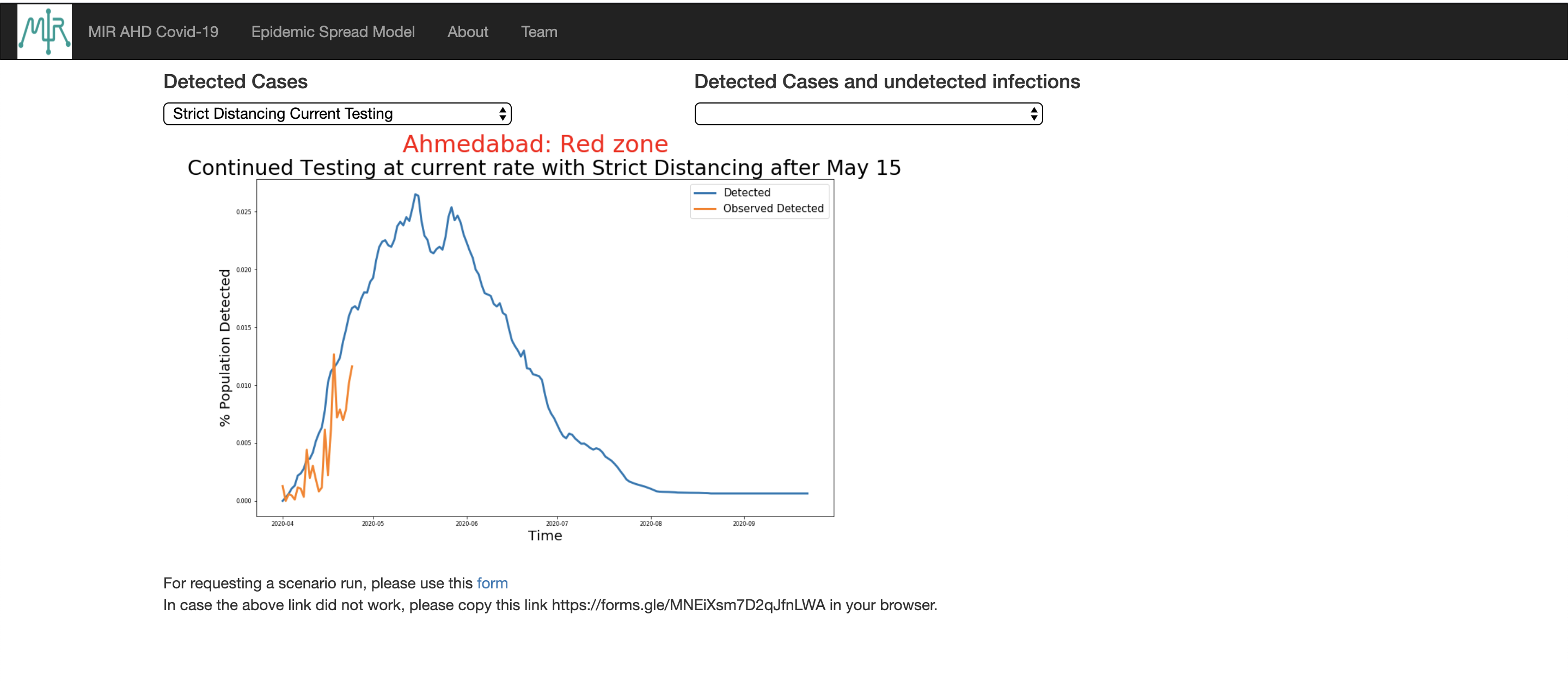IIT Gandhinagar researchers develop an interactive COVID-19 Dashboard to aid optimised testing and post-lockdown operations
Gandhinagar: A team of researchers and students at the Indian Institute of Technology Gandhinagar (IITGN) have developed an interactive “COVID-19 Dashboard” that provides different epidemiological scenario-specific information at a city-scale. It is aimed at helping various stakeholders in optimised testing efforts and post-lockdown operations to contain community infection.
The dashboard called “MIR AHD Covid-19 Dashboard” is a city-scale project which integrates the complex social and transportation patterns with state-of-the-art epidemic spread models, in addition to testing and quarantining rates, and contact tracing rates. As cities prepare to open after current lockdowns, the recovery strategies have to account for social distancing, congestion-free transits and unusual traffic patterns these cities would witness with red and containment zones declared as a no-travel zone. This dashboard, first of its kind for Indian cities, assesses the local risk factors to give a city-scale projection of COVID-19 incidence while accounting for various social distancing scenarios. In addition to the epidemiological data, it also disseminates information about potential congestion zones and rerouting under different containment scenarios to the stakeholders.
In densely populated areas, intra-community interactions and inter-community interactions become an important accelerator in disease spread. To simplify this complexity, this network-science based epidemiological spread model has been developed using state-of-the-art SEIR (Susceptible, Exposed, Infected, and Resistant) models with adaptations. It is designed keeping in mind different stakeholders, including policymakers, administrators, hospitals, and the general public and results are displayed as easy-to-understand graphical representations.
For policymakers and administrators, this dashboard can simulate the rate of COVID-19 spread in various zones of a city under different lockdown strategies that have been implemented or under consideration to apply. Another feature of the dashboard provides information to the stakeholders about the most critical intersections in the city if the city decides to implement “drive-through testing”. It can simulate post-lockdown congestions on various intersections across the city of Ahmedabad under different partial lockdown scenarios.
For the general public, this dashboard provides risk indices based on various socio-economic indicators; ward level information on the number of cases; current statistics of COVID-19 situation for all the districts of Gujarat; maps of the red, green and orange zone; COVID-19 hospitals; location of government testing laboratories; and an interactive slider to choose their travel paths in case they want to avoid travelling through a particular zone.
Prof Udit Bhatia (Civil Engineering), Professor Prasanna Venkatesh B (Physics) from IITGN are leading the research effort with Dr Deep Chakrabarti from King George’s Medical University, UP, who is advising the team at IITGN on the clinical characteristics of the disease. Besides, two teams run the dashboard development work. While one team, including Raviraj Dave, Rohan Patil, Harsh Patel, and Viraj Shah, is working on network modeling aspects; the second team, including Shahzaib Khan, Ayush Lodha, Kamlesh, and Kaushal Modi, is working on spread modeling.
The team uses census 2011 and 2020 population data for the city, combined with land-use maps. Patient count, hospitals, city-wide zoning, and testing site locations are updated in real-time based on various Application Programming Interfaces (APIs). Some more features (such as trajectories) are also integrated into the dashboard. Stakeholders can also submit their job requests on the dashboard, and the team will provide the outputs relevant to that scenario.
Prof Udit Bhatia, Assistant Professor of Civil Engineering at IITGN and one of the lead researchers of this project said, “MIR AHD Covid-19 is intended to disseminate information to stakeholders and the public that can help them make research-backed decisions during the time of crisis. This model relies on our US patented technology that takes into account the travel preferences in the town and ranks different road segments according to their relative importance in the network. We are discussing with different government agencies who can utilise this dashboard to handle different scenarios. Researchers from Germany are also interested to explore the possibility of making similar exercises operational in their cities. We aim to make the best of our efforts to help our nation come out of this crisis soon.”
While the initial testbed is Ahmedabad, the team is working on expanding the model to other Indian cities and states which have been identified as hotspots by the Ministry of Home Affairs.
The “MIR AHD Covid-19” Dashboard can be seen here:
http://covid19.iitgn.ac.in/.

